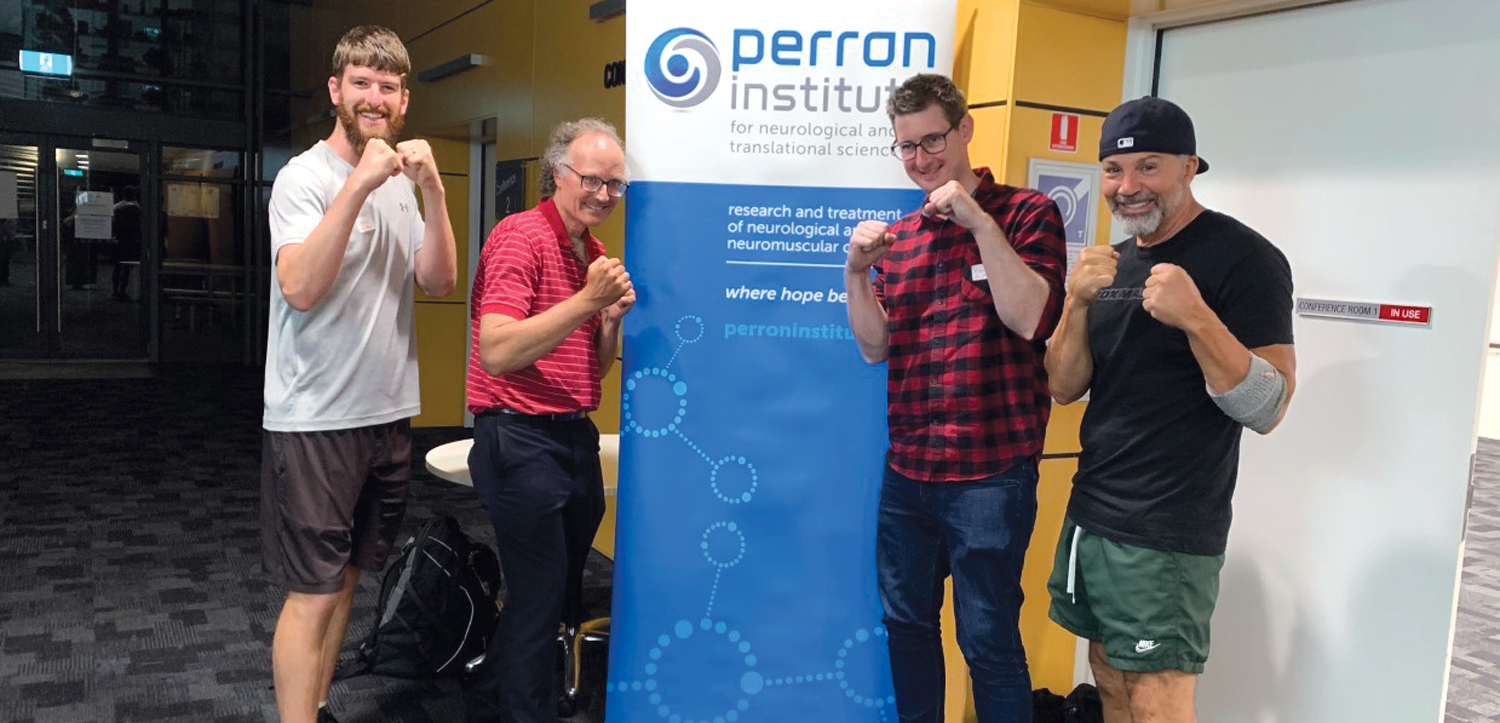 While boxing is not associated with being “good” for our brains – with many doctors strongly opposed to the sport — new Perth research suggests that ‘solo’ boxing could have special health benefits.
While boxing is not associated with being “good” for our brains – with many doctors strongly opposed to the sport — new Perth research suggests that ‘solo’ boxing could have special health benefits.
The study has shown that non-contact boxing may be a valuable tool for people with Parkinson’s disease to improve their quality of life.
The study saw people with Parkinson’s participate in a 15-week boxing exercise program, with 90% reporting an improvement in the severity of their symptoms.
It also found boxing was a feasible treatment, with participants reporting no injuries or soreness, while also finding the exercise enjoyable.
The research was done by Edith Cowan University in partnership with the Perron Institute and boxer Rai Fazio, and with Sir Charles Gairdner Hospital and the University of Western Australia also collaborating.
It involved 10 people with early-stage Parkinson’s performing three one-hour boxing sessions per week, over 15 weeks.
Rather than facing an opponent, the group did battle against a Fightmaster boxing unit, a commercially available device which has 11 padded punching targets mounted to a stand.
The program had three distinct segments: an introduction to boxing, a high-intensity component and a cognitively challenging segment.
Participants completed two-to-three-minute “rounds” where they were required to strike the various pads in different sequences, followed by no more than two minutes of rest.
Dr Travis Cruickshank from ECU’s Centre for Precision Health said boxing has grown in popularity among those living with PD, despite little evidence supporting its use.
“So, what we did was look really robustly at how feasible a boxing program is for people with PD, which hadn’t been done in the past,” he said.
“We used heart rate monitors throughout the intervention so we could see the cardiovascular load on our participants, we used scales that measured their perceived levels of exertion from both a physical and cognitive standpoint.
“We have a lot of the metrics needed to say it’s safe, well tolerated and that people enjoyed it.”
Big benefits
After the 15-week program, nine of the 10 participants improved their score on the Unified Parkinson’s Disease Rating Scale, a tool used to measure the progression and severity of PD.
The group also reported a reduction in fatigue and improvements in sleep.
Dr Cruickshank said that group boxing has the benefit of by combining many aspects of therapy, such as exercise, cognitive stimulation and socialisation into a single exercise.
“In the past, I might have been working with people with Parkinson’s and we’d have exercises in a gym, then a separate computerised cognitive training program, and another event for the social aspect,” he said.
“With boxing, we can combine all of those and deliver it really quickly, which makes it all more enjoyable and people will stick with it.”
A feasible option
Dr Cruickshank said a key aspect of the study was establishing boxing as a feasible option to be prescribed to people living with early-stage PD.
Despite the high intensity of many of the workouts, participants reported no increase in muscle soreness from the program, nor major injuries, which may be expected for people with PD.
This meant that every person completed the 15-week program with almost 97 per cent of training sessions completed.
“In fact, after we finished the study, everyone chose to buy a Fightmaster and have it installed in their home,” Dr Cruickshank said.
“So, in the future programs such as this could be run in people’s homes or in clinics, it could be self-administered, supervised in a clinic or done remotely via telehealth so people in regional areas can still be included.
“We know the camaraderie and positive relationships formed between the members in the study also served as a motivator.
“These social benefits cannot be understated, particularly given the link between socialisation and emotional wellbeing.”
Fighting the fight
Dr Cruickshank said the next step was to trial boxing’s therapeutic effectiveness in a larger group of people living with various stages of PD.
He said he believed it could be effective for other neurological conditions such as Huntington’s Disease, multiple sclerosis, stroke and traumatic brain injury and more.
“Beyond these neurological conditions, people with cancer, may also see benefits, particularly to bone mineral content and muscle mass which is impacted by treatments,” he said.
“The ability to adapt the training to someone’s individual state is really important.”
Dr Cruickshank said he hoped boxing programs could soon be rolled out in treating PD once researchers have established the therapeutic effectiveness with larger trials.
Senior author Clinical Professor David Blacker, medical director of the Perron Institute, is a strong advocate for exercise and has a personal perspective as someone living with PD.
“Exercise has significantly helped to reduce my symptoms,” Professor Blacker said.
“The WA study provides a depth of feasibility and safety data, methodological detail and preliminary efficacy for periodised non-contact boxing that is not described elsewhere.
“It provides a useful basis for future studies of boxing training for PD.”

